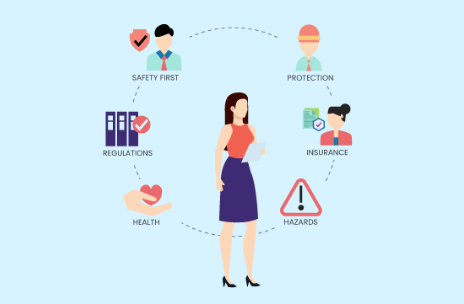
Ensuring Safety in Medical Institutions: A Comprehensive Guide
In today’s world, the safety and well-being of patients, staff, and visitors in medical institutions are of utmost importance. With the ever-evolving healthcare landscape, it’s crucial for medical institutions to maintain a safe and secure environment. This article delves into the various aspects of medical institute safety, providing insights and guidelines to ensure the highest standards of safety are met.
Table of Contents
- Introduction
- Importance of Safety in Medical Institutions
- Regulatory Compliance
- Physical Security Measures 4.1. Access Control Systems 4.2. Surveillance Cameras 4.3. Emergency Response Plans
- Cybersecurity in Healthcare
- Staff Training and Awareness
- Infection Control
- Patient Safety
- Visitor Guidelines
- Managing Medical Waste
- Fire Safety
- Emergency Preparedness
- Continuous Improvement
- Conclusion
- FAQs on Medical Institute Safety
Introduction
Medical institutions play a vital role in our society, offering healthcare services and saving lives. To fulfill this noble mission, it’s imperative that these institutions prioritize safety in all aspects of their operations. This article explores the multifaceted nature of medical institute safety, from physical security to cybersecurity and beyond.
Importance of Safety in Medical Institutions
Ensuring safety within medical institutions is not just a legal requirement; it’s a moral obligation. Patients entrust their well-being to these establishments, making it essential that they feel secure and protected throughout their healthcare journey. Moreover, a safe environment is conducive to efficient healthcare delivery and the well-being of medical staff.
Regulatory Compliance
Medical institutions must adhere to strict regulatory standards and guidelines. These regulations are designed to ensure the highest level of safety and care for patients. Compliance with regulations is not optional but mandatory to maintain the institution’s license and reputation.
Physical Security Measures
Access Control Systems
Implementing access control systems is paramount in medical institutions. These systems restrict unauthorized entry to sensitive areas, safeguarding patient records, pharmaceuticals, and medical equipment.
Surveillance Cameras
Surveillance cameras serve as an extra set of eyes, monitoring the premises 24/7. They deter potential threats and provide valuable evidence in case of incidents.
Emergency Response Plans
Medical institutions must have well-defined emergency response plans in place. This includes fire evacuation procedures, medical emergency response, and security protocols for handling aggressive individuals.
Cybersecurity in Healthcare
In the digital age, cybersecurity is a significant concern. Protecting patient records and sensitive medical data from cyber threats is vital. Robust cybersecurity measures are non-negotiable.
Staff Training and Awareness
All staff members, from doctors to janitors, should undergo safety training. Creating a culture of safety awareness ensures that every individual plays a part in maintaining a secure environment.
Infection Control
Infection control measures are especially crucial in medical institutions. Stringent hygiene protocols, sterilization procedures, and the use of personal protective equipment (PPE) are essential to prevent the spread of infections.
Patient Safety
Patients should feel safe and cared for during their stay. Communication, error prevention, and clear protocols contribute to patient safety.
Visitor Guidelines
Establishing visitor guidelines, including visitor hours and registration, helps maintain order and security within the facility.
Managing Medical Waste
Proper disposal of medical waste is not only an environmental concern but also a safety issue. Following guidelines for waste disposal is imperative.
Fire Safety
Fire safety measures, such as regular drills, fire alarms, and fire extinguisher placement, are crucial to protect against a potentially catastrophic event.
Emergency Preparedness
Medical institutions must be prepared for various emergencies, from natural disasters to medical crises. Being well-prepared can save lives.
Continuous Improvement
Safety is an ongoing process. Medical institutions should regularly assess and improve their safety protocols, learning from past incidents and adapting to new challenges.
Conclusion
In conclusion, safety in medical institutions is a comprehensive and multifaceted endeavor. It encompasses physical security, cybersecurity, infection control, and the well-being of both patients and staff. By prioritizing safety and adhering to regulations, medical institutions can fulfill their mission of providing high-quality healthcare.







